June 8, 2018
From a series of Twitter threads posted in June 2018:
Welcome to Chernobyl, Ukraine, site of the world’s worst nuclear accident on April 26, 1986.
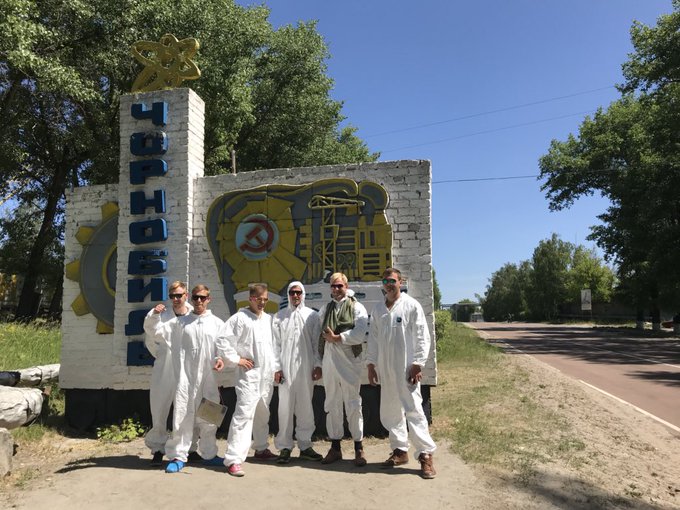
I’ve come here on a special day-tour from Kyiv. The site is about 62 miles north of Ukraine’s capital, about 10 miles from the border with Belarus.
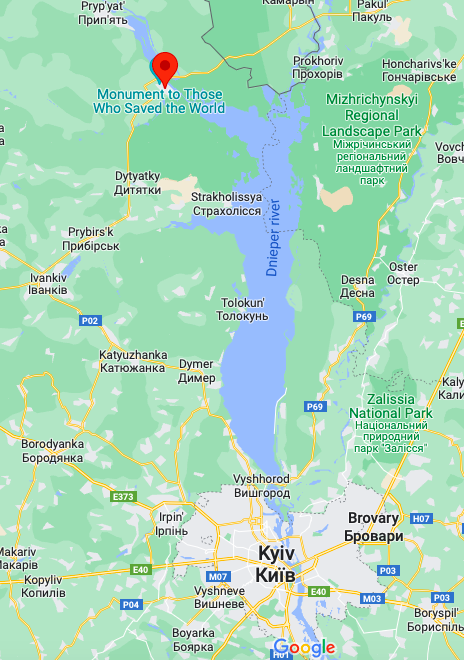
At the start of the trip, I received my personal handheld Geiger counter. The typical background radiation in a city like Kiev, and at the entrance to the Chernobyl exclusion zone, is about 0.10 to 0.15 microsieverts (uSv) per hour.
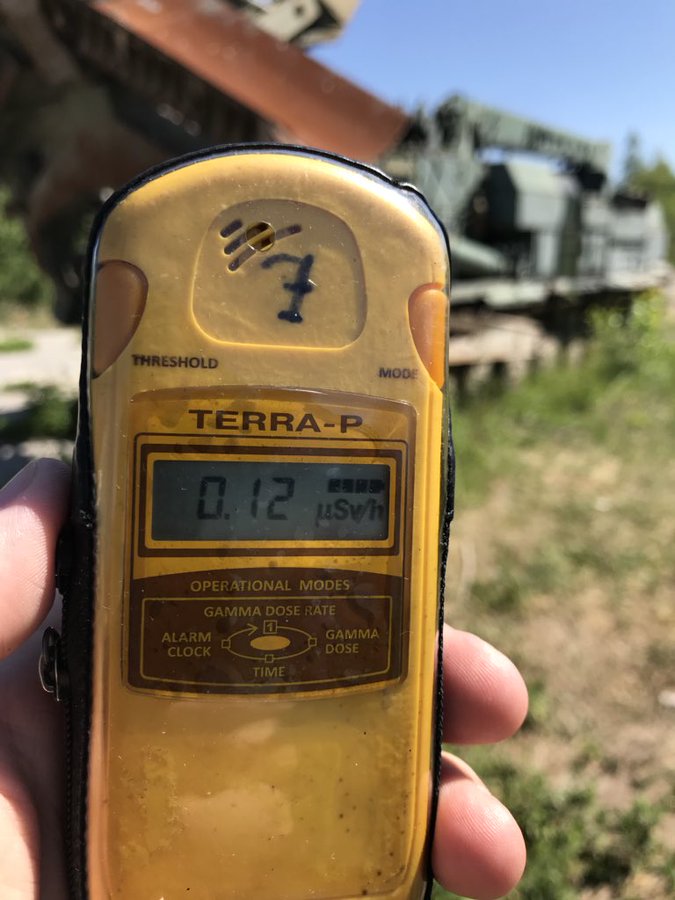
The zone from 30km to 10km away from the Chernobyl reactor can still be inhabited, but only by temporary containment workers living in barracks and locals age 55 or older (i.e., above child-bearing years) who have chosen to return. The reading there stayed around 0.20 uSv/hr.
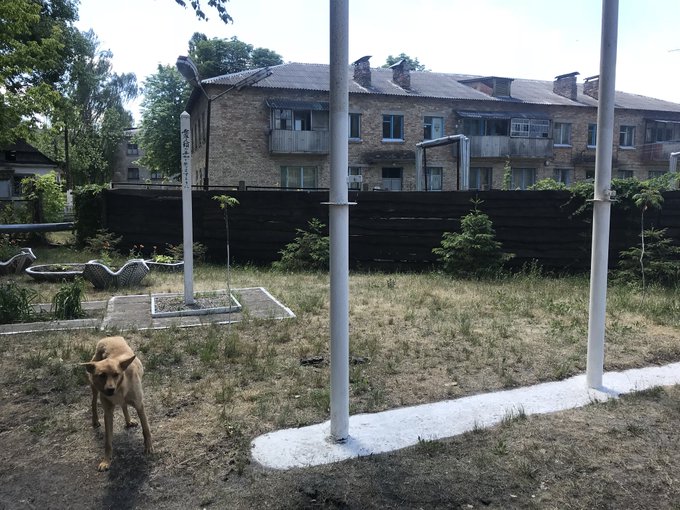
The last Lenin left in Ukraine, at Chernobyl. All the other ones have been torn down.
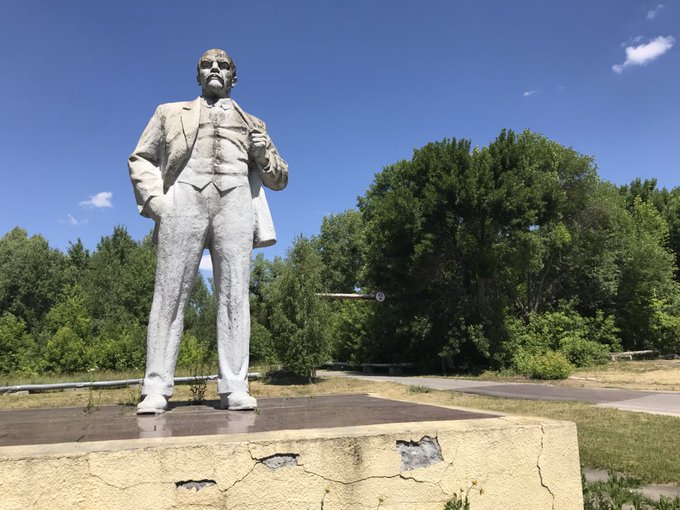
“The third angel sounded his trumpet and a great star, blazing like a torch, fell from heaven on a third of the rivers and springs of water. The name of the star is Wormwood, and the waters became bitter and many died.” – Revelations 8:10-11 (Chernobyl means wormwood in Russian)
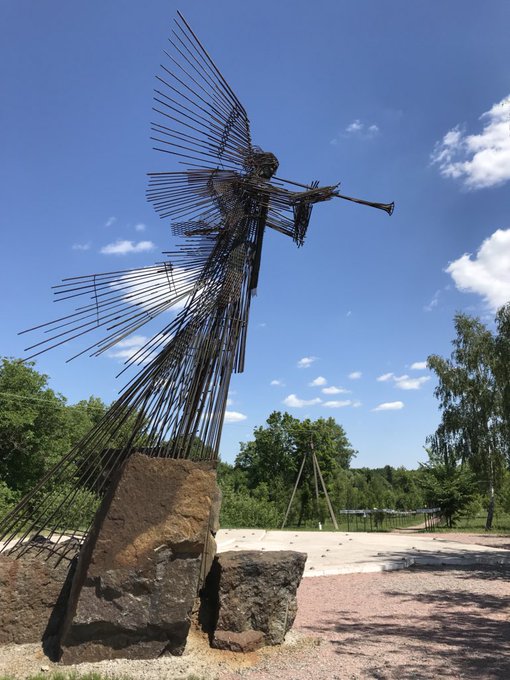
Monument to the first responders to the 1986 Chernobyl nuclear disaster, outside the local fire department. Nearly all of them died of radiation poisoning.
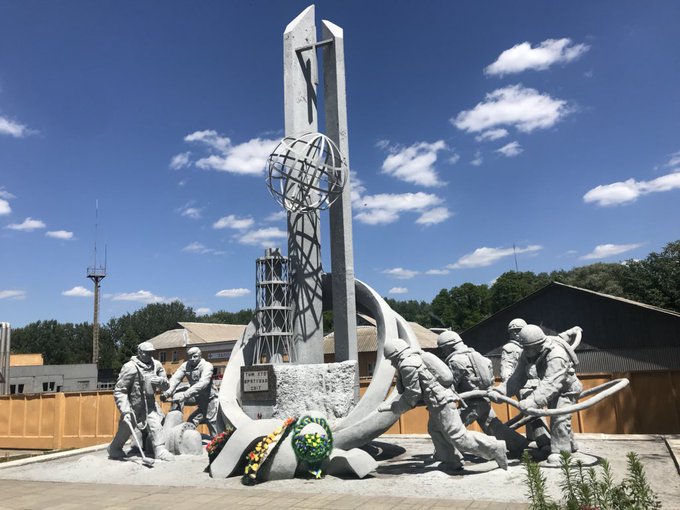
After we passed the 10km checkpoint we soon reached our first “hot zone” – the garden of an abandoned school. The typical reading, once you walked on the path towards the school, was 2.0 uSv/hr.
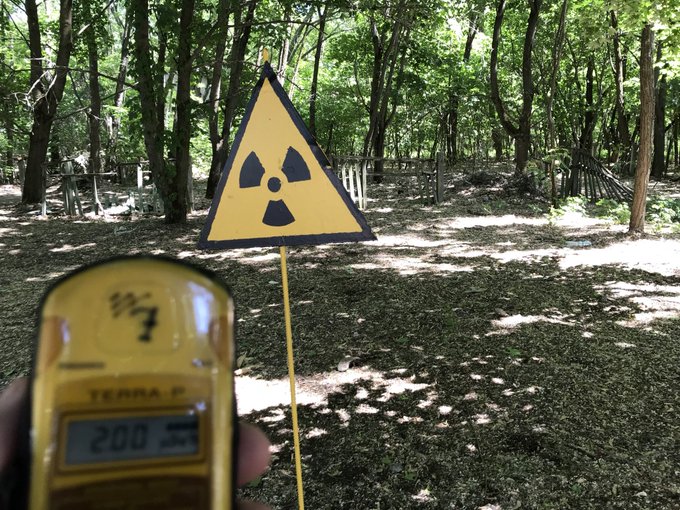
That’s more than 15-20x typical background radiation, which sounds awful, but it’s basically the same as you get while flying at 30,000+ feet in a commercial aircraft. However, if you put it down to the ground in certain places, it went up to 5 or higher.
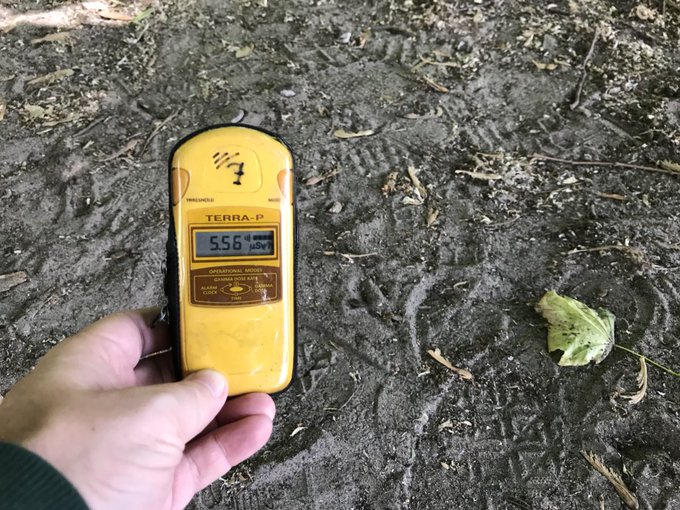
So how worrying is 5 uSv/hr? Well, if you stood there for 3 hours, you’d get the equivalent of a dental x-ray. I stood there for about 10 seconds. At 2 uSv/hr, you’d be getting about 3 dental x-rays a day – which is why nobody can live there.
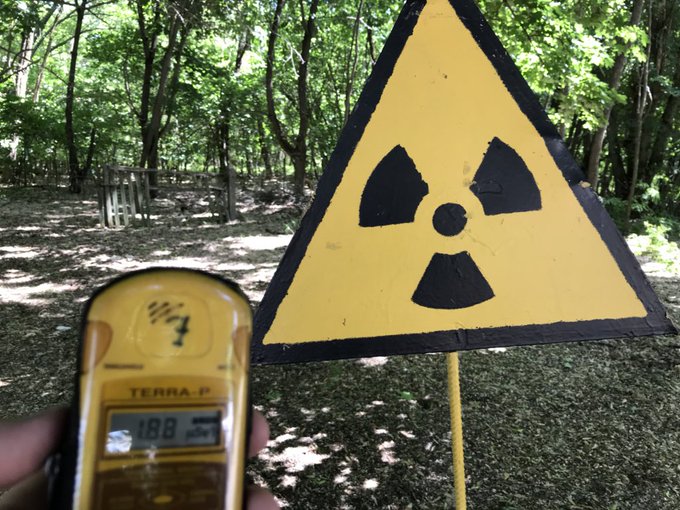
Abandoned community center and store in a village evacuated after the 1986 Chernobyl nuclear disaster.
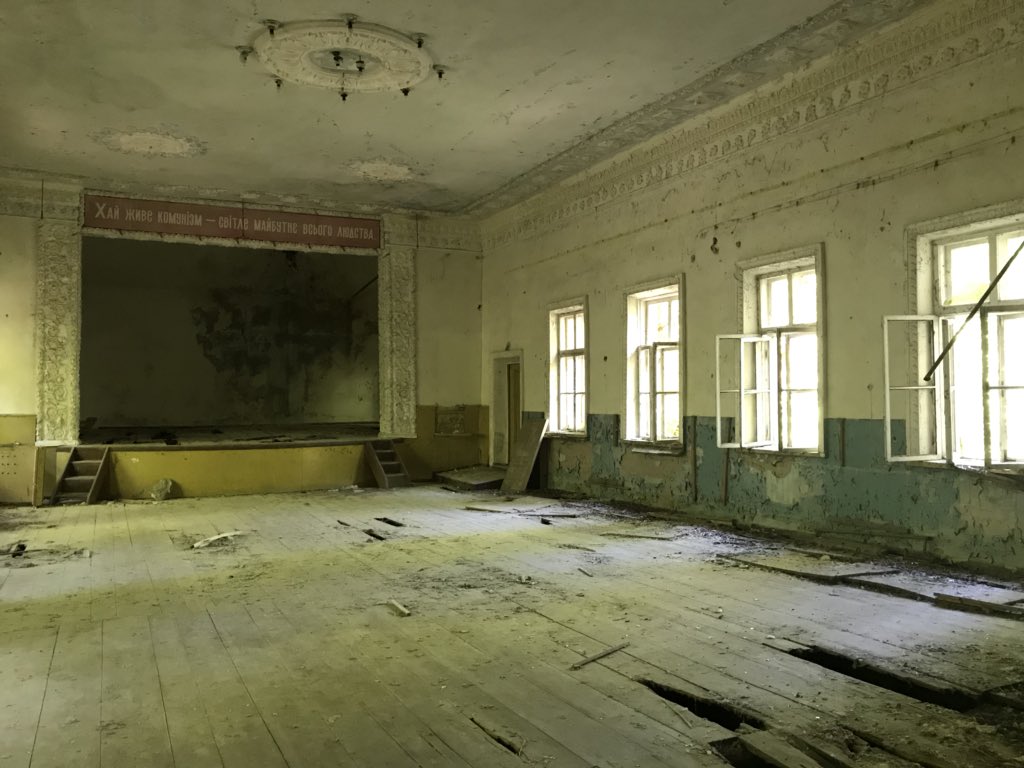
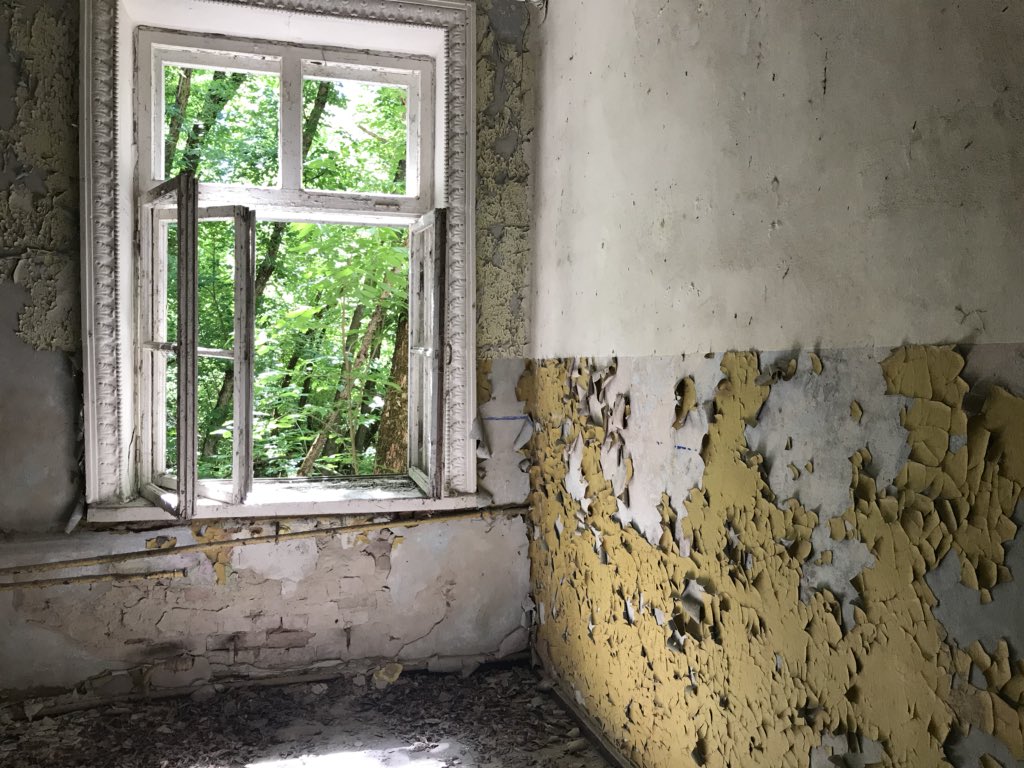
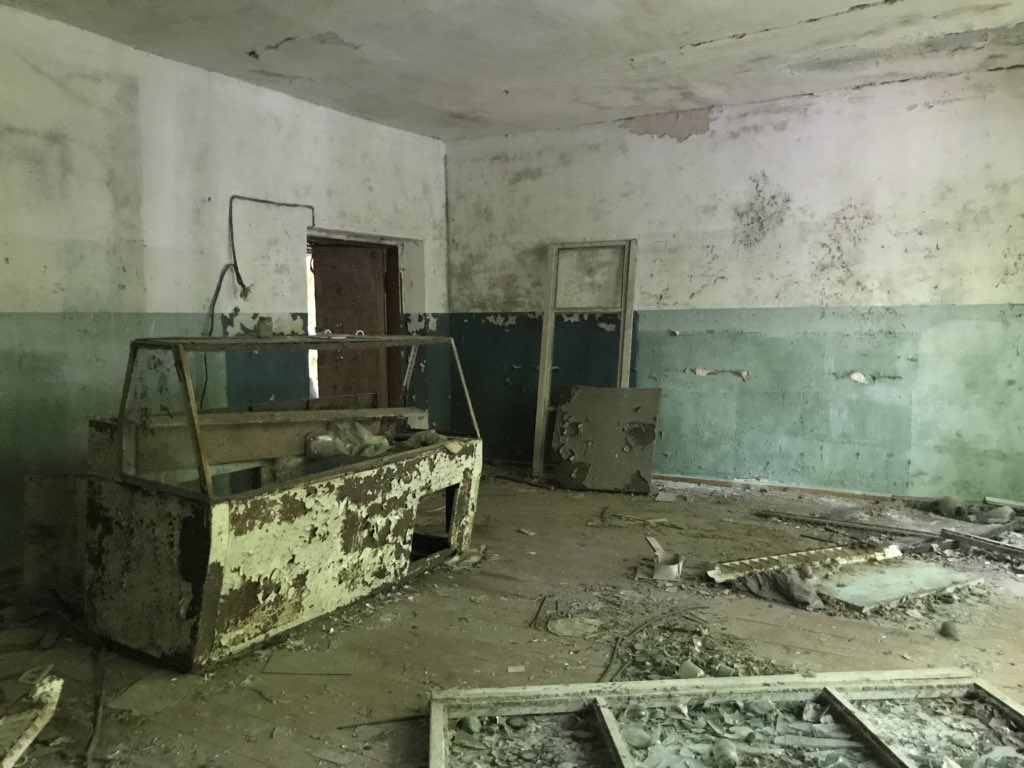
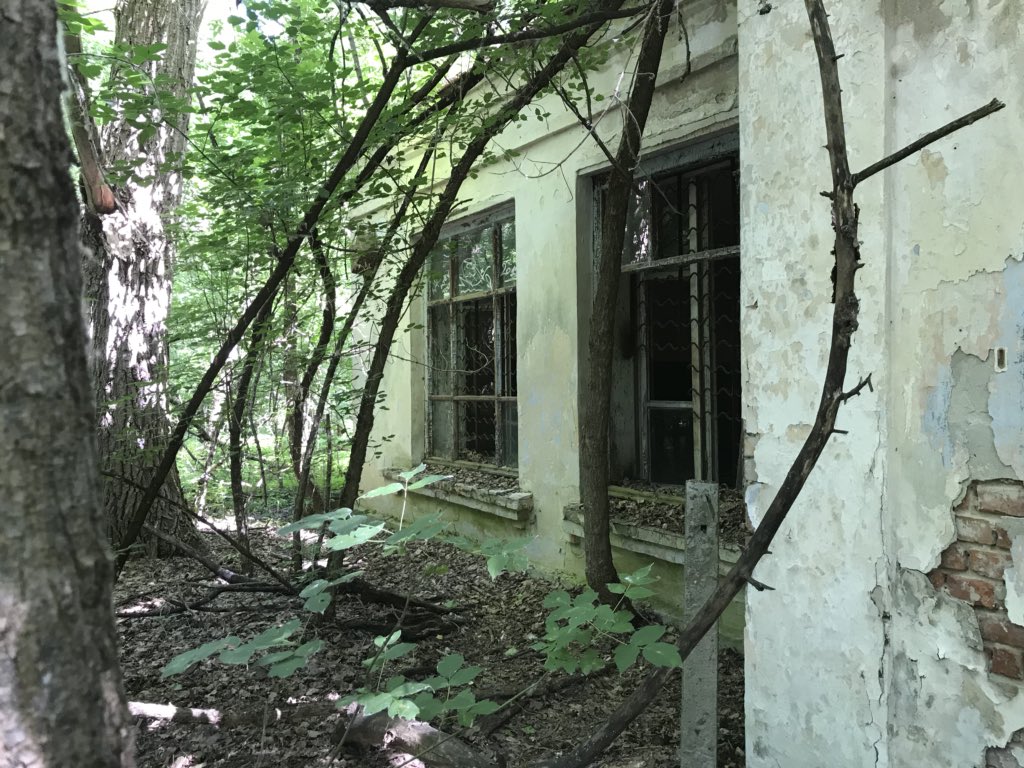
Abandoned school and day care center in a village near the Chernobyl nuclear power plant. It was really creepy walking around here listening to my Geiger counter tweeting away.
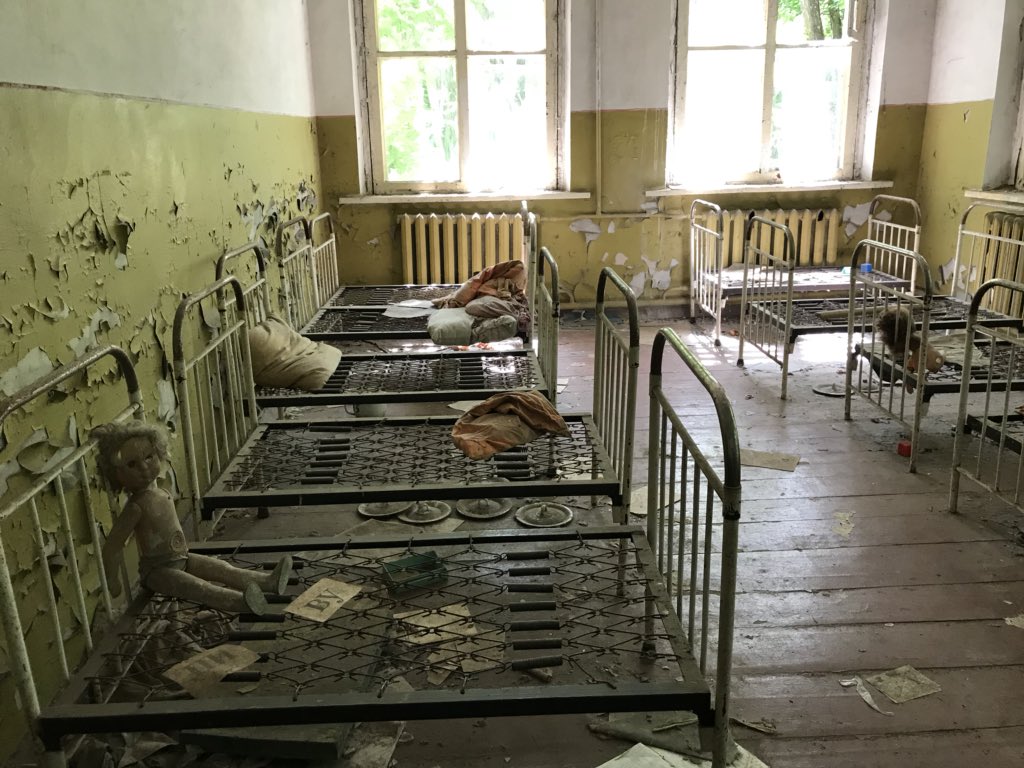
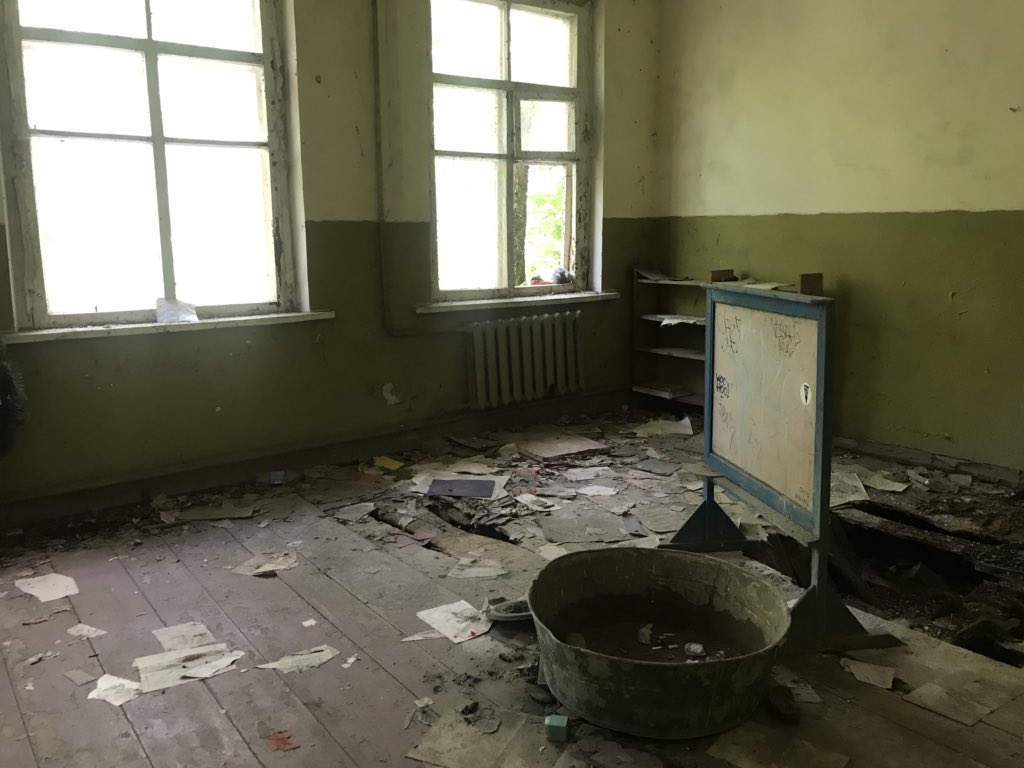
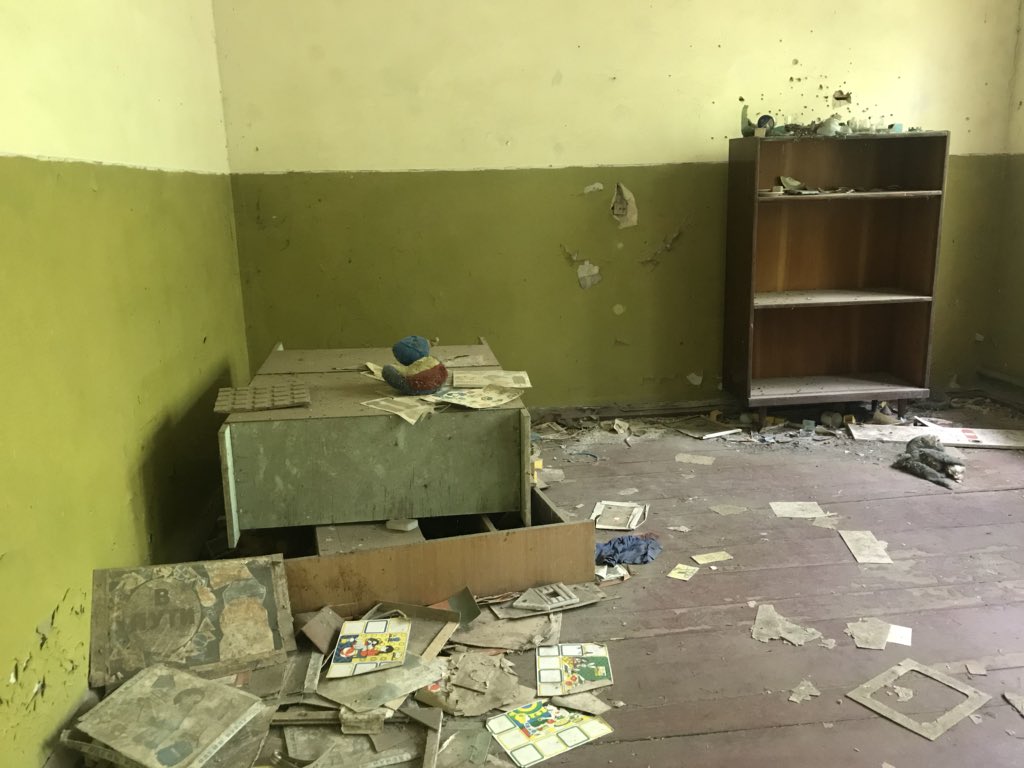
As you approach the Chernobyl reactor, the average outdoor reading is around 1.3 uSv/hr. That’s about 10x normal background radiation, but less than you’re typically getting at 30,000 feet in airliner.
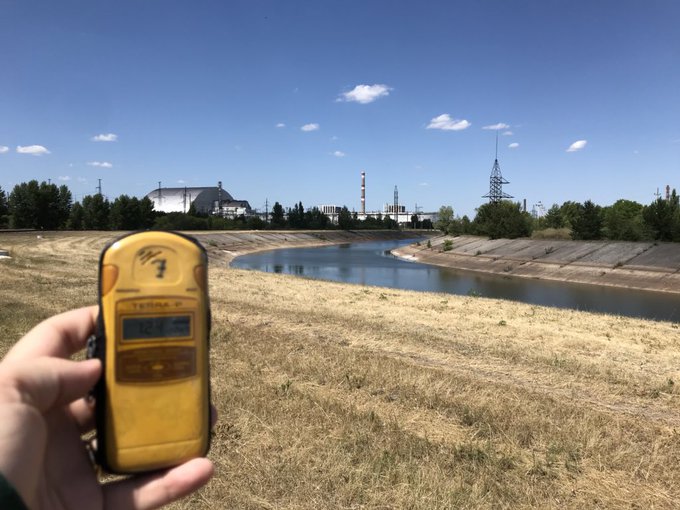
Directly outside the #4 reactor the reading was a fairly moderate 1.2 uSv/hr. It used to be 3 or higher here until they built the new stainless steel arched containment unit about a year ago – quite a major engineering project.
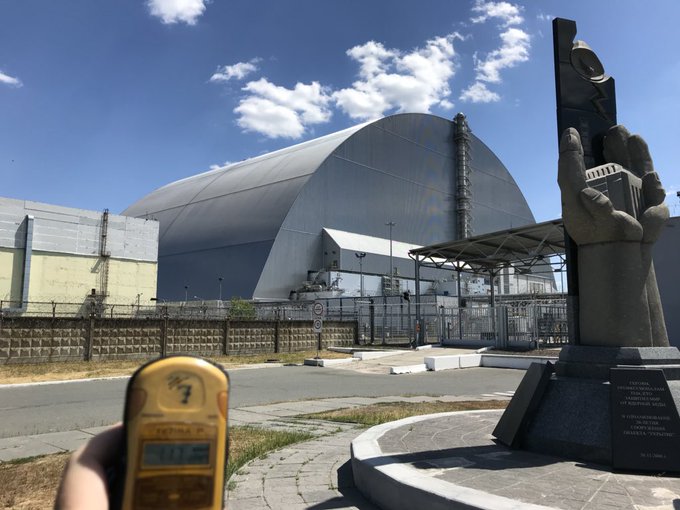
That’s still about one dental x-ray per day for anyone working there unprotected. And if you went inside that containment dome – well, nobody can, they only use robots inside because it’s off the charts.
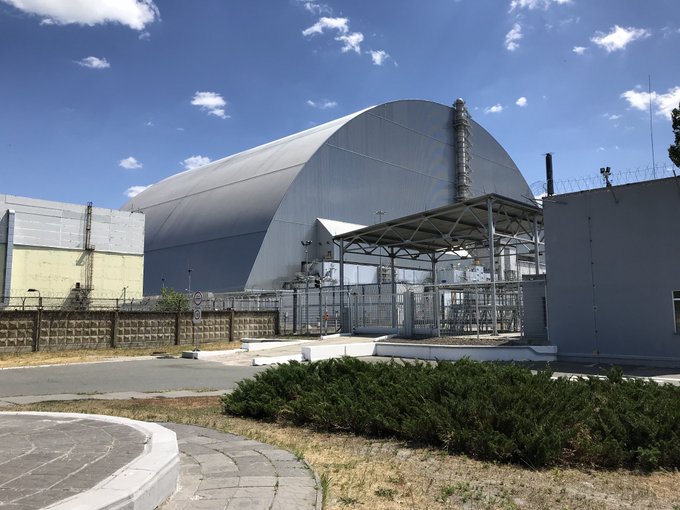
Also, the wind was blowing in the other direction. When our bus drive past on the other side (pictured), even inside the bus it spiked to 9 or 10 uSv/hr for a few seconds.
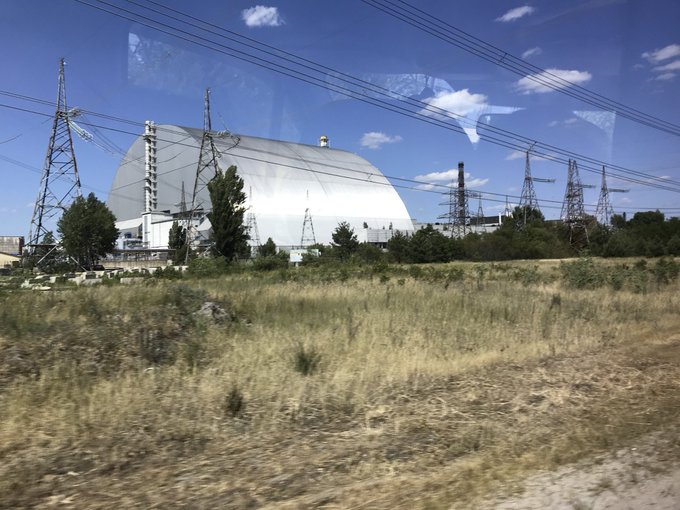
Radiation can really vary a lot depending on just a few feet. Here, at the old entrance sign to the abandoned city of Pripyat, the reading was 0.9 uSv/hr.
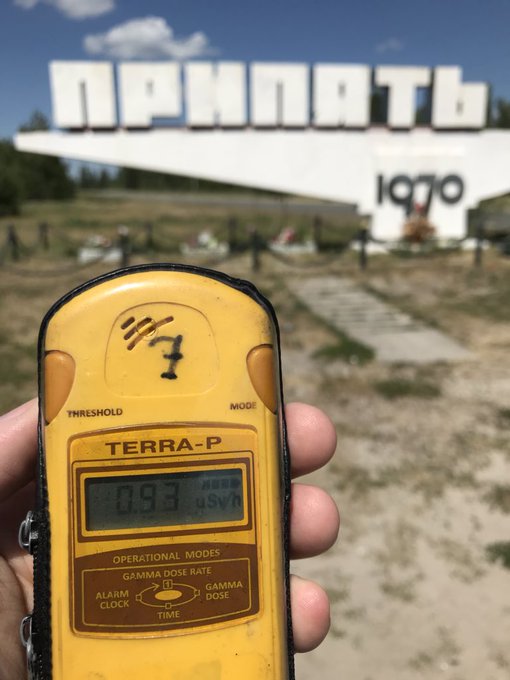
But just a few feet away, it leapt to almost 9 uSv/hr. Everything on the far side of the railroad tracks is really contaminated. Standing here is equivalent to a dental X-ray every two hours.
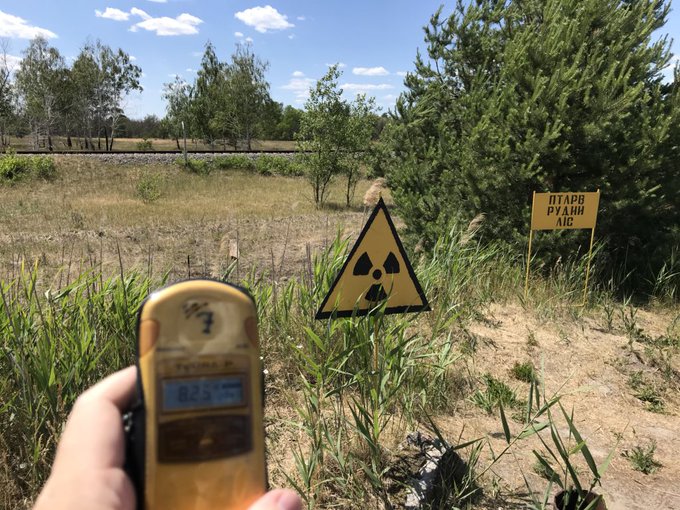
The typical reading in the abandoned city of Pripyat itself is about 1-2 uSv/hr.
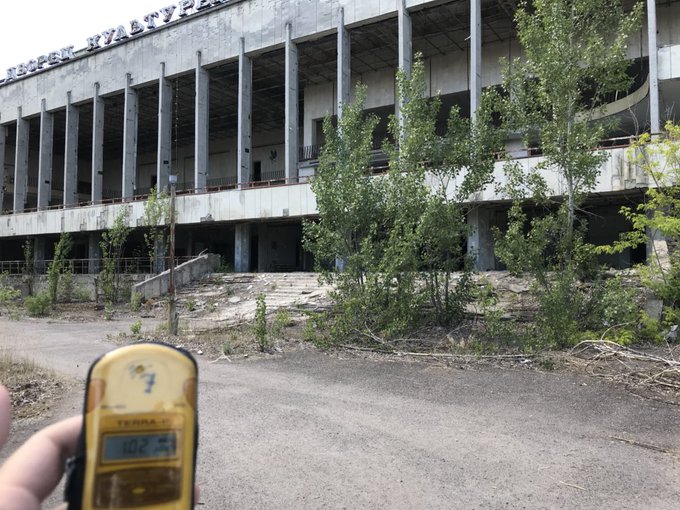
But look at this well, in the center of Pripyat: 56 uSv/hr, a dental X-ray every 15 minutes if you stick around. And if you drank from it … big trouble.
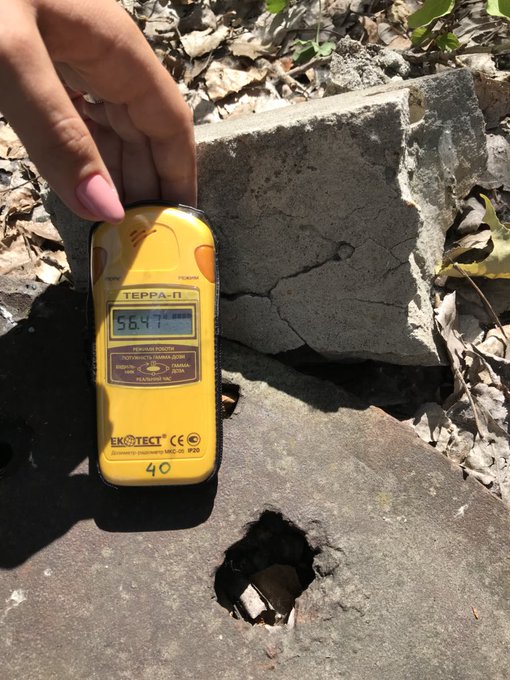
Some “then and now” pictures of the permanently evacuated Soviet city of Pripyat, Ukraine where the people working at the Chernobyl nuclear power plant lived: top hotel, city hall, football stadium, swimming complex.
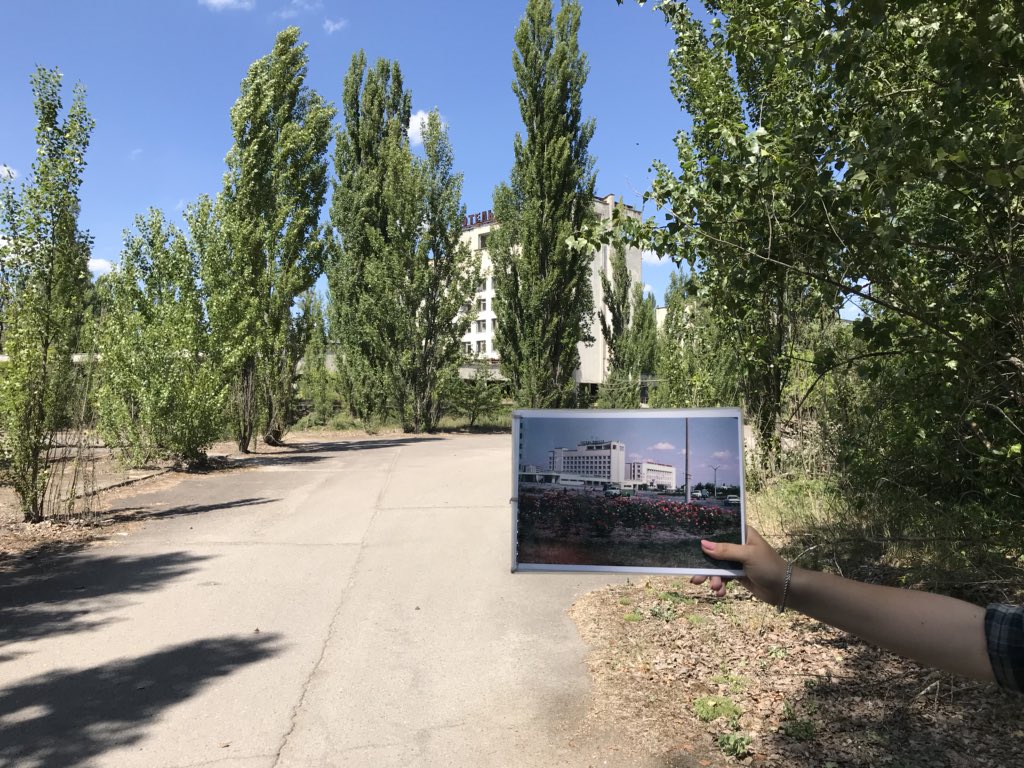
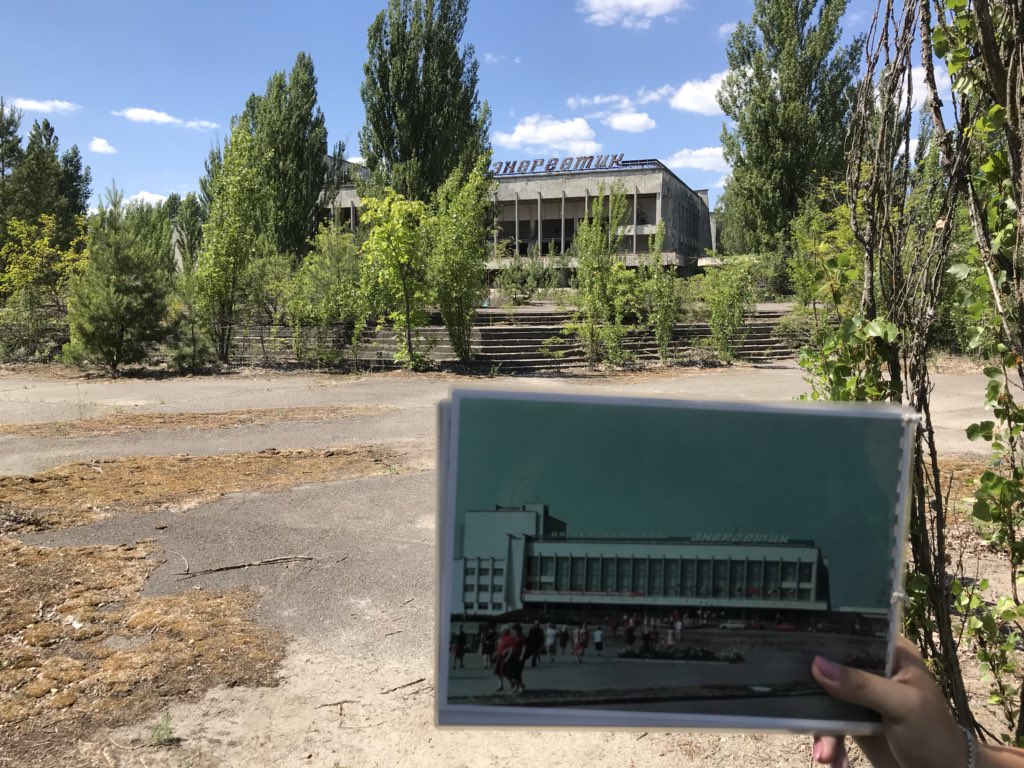
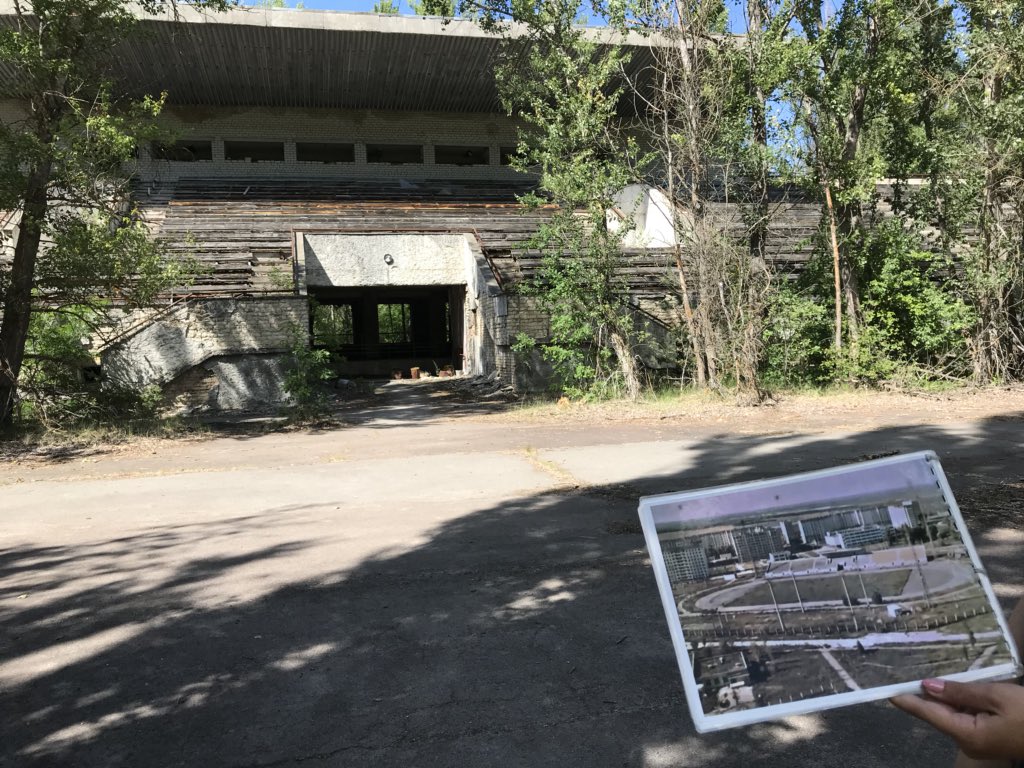
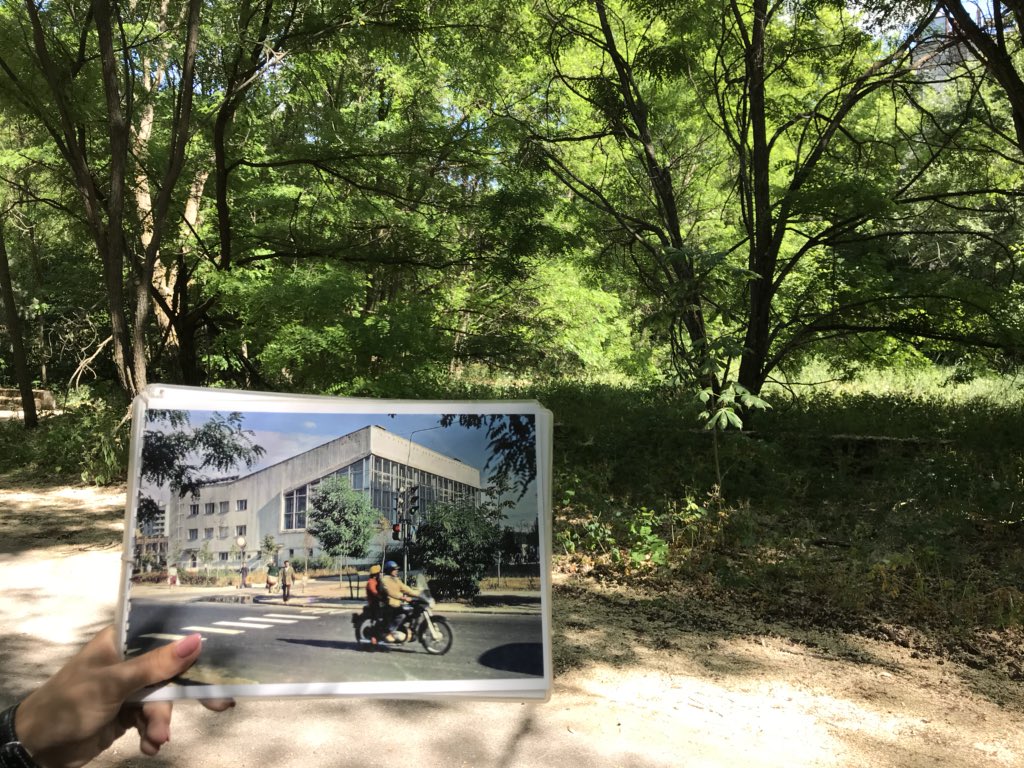
Abandoned swimming pool and indoor sports complex in the city of Pripyat, Ukraine, where the workers from the Chernobyl nuclear power plant worked.
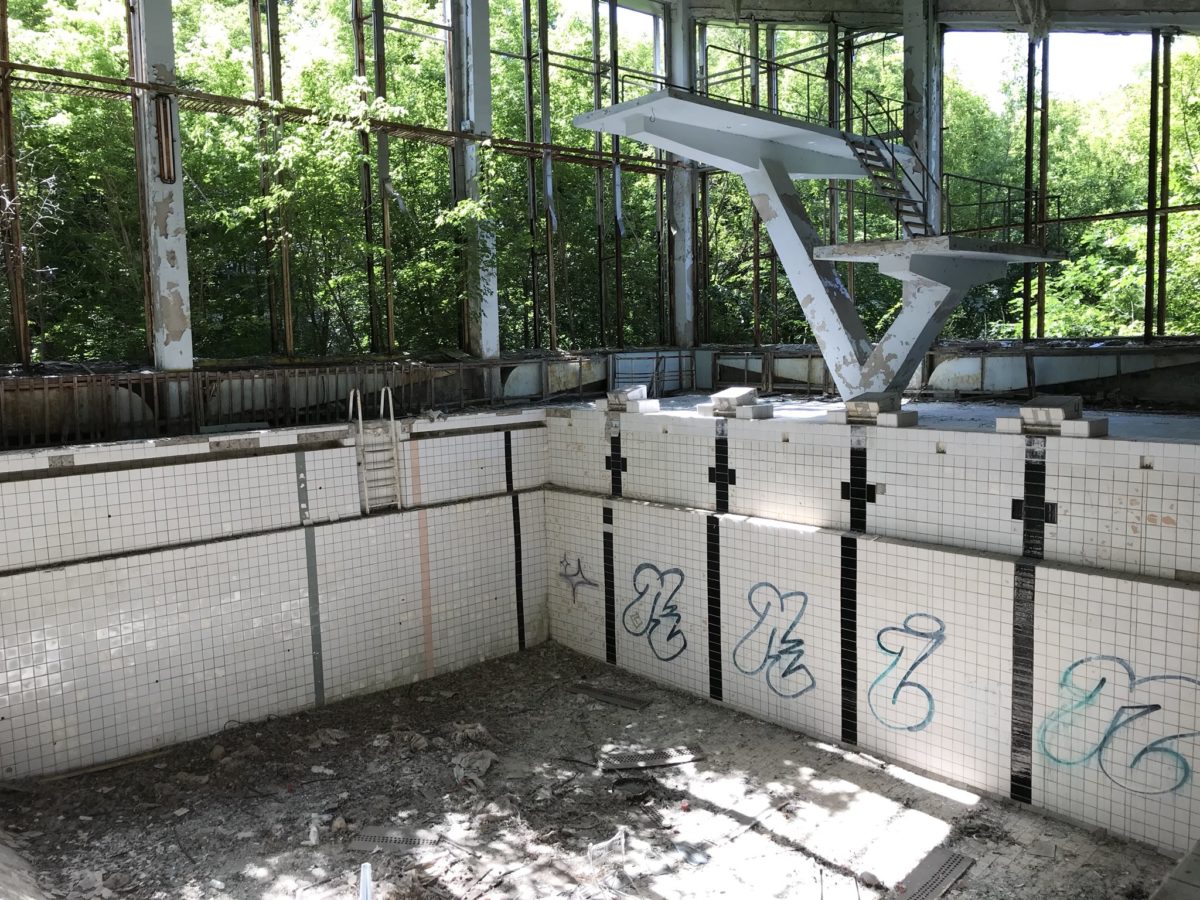
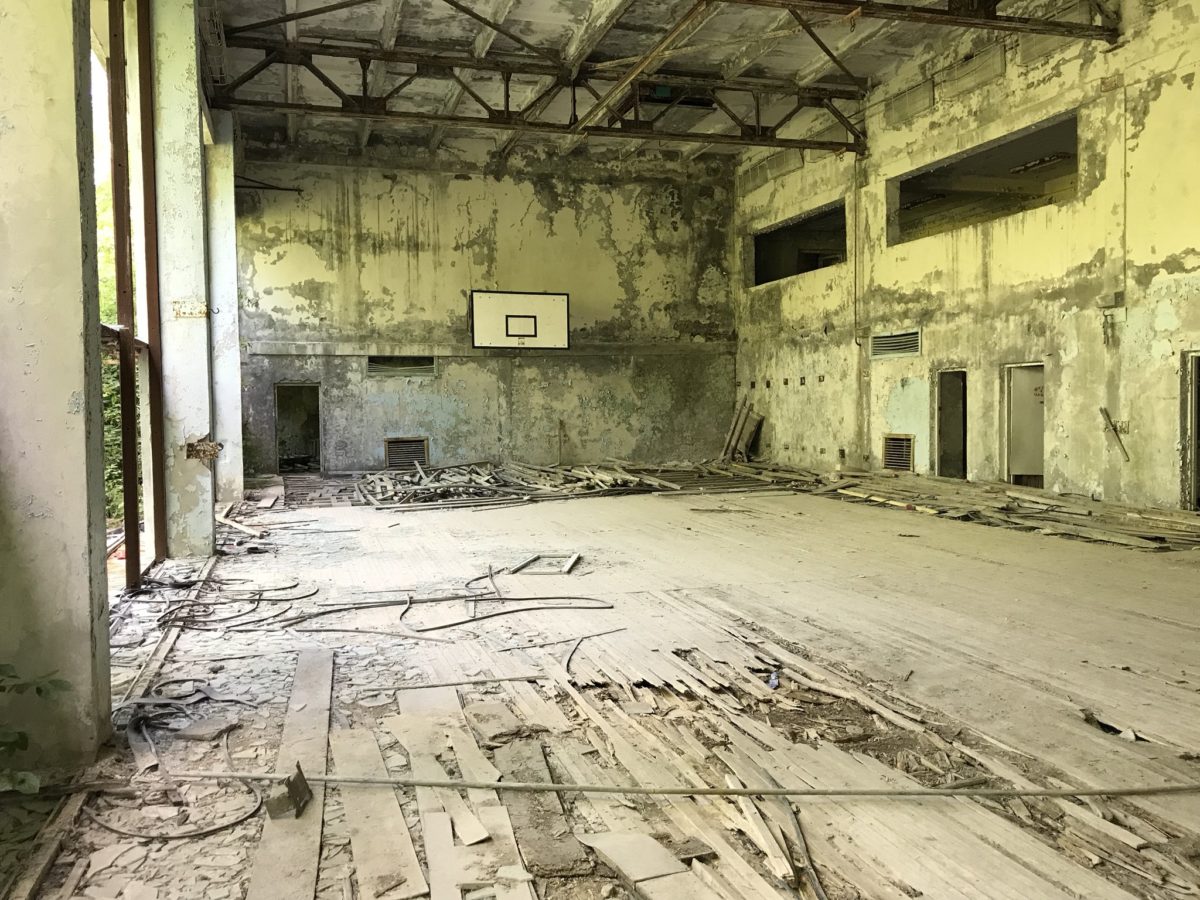
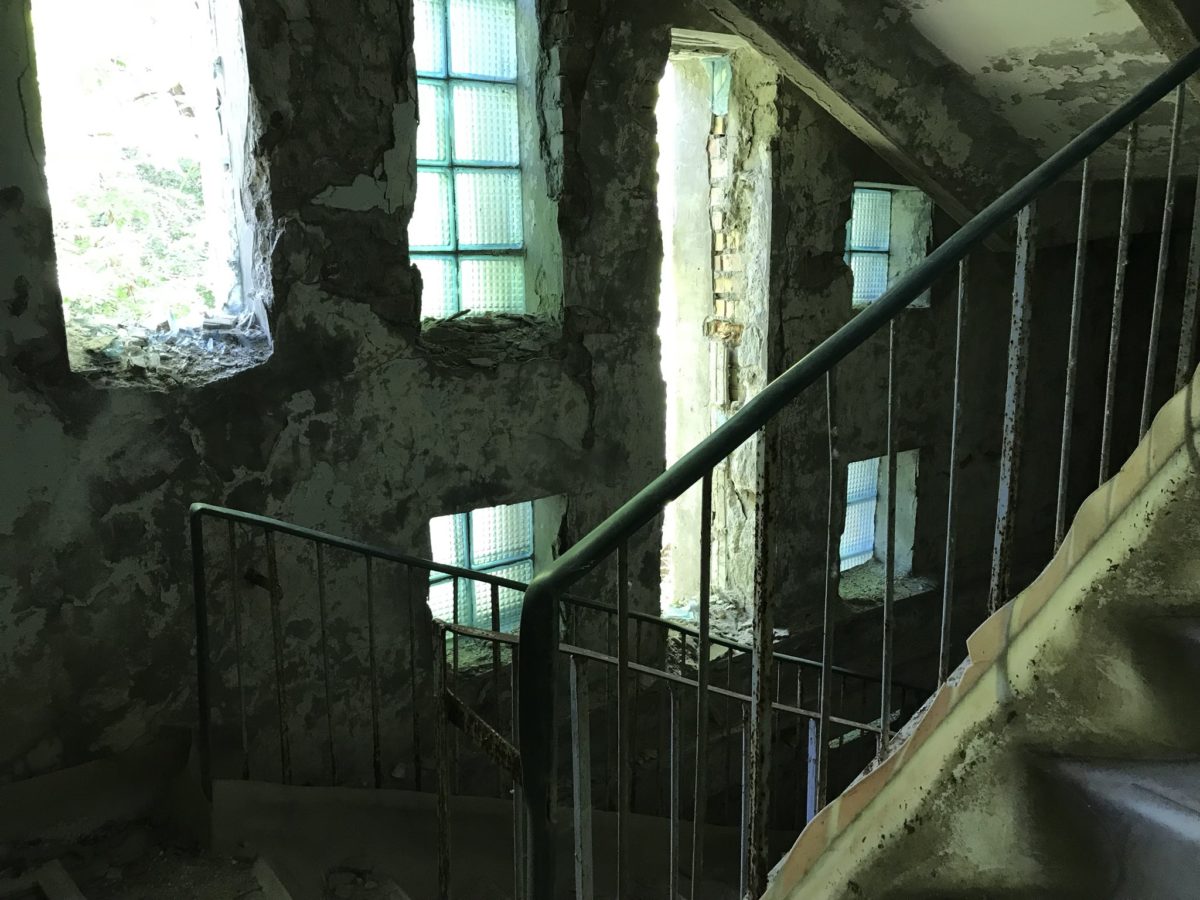
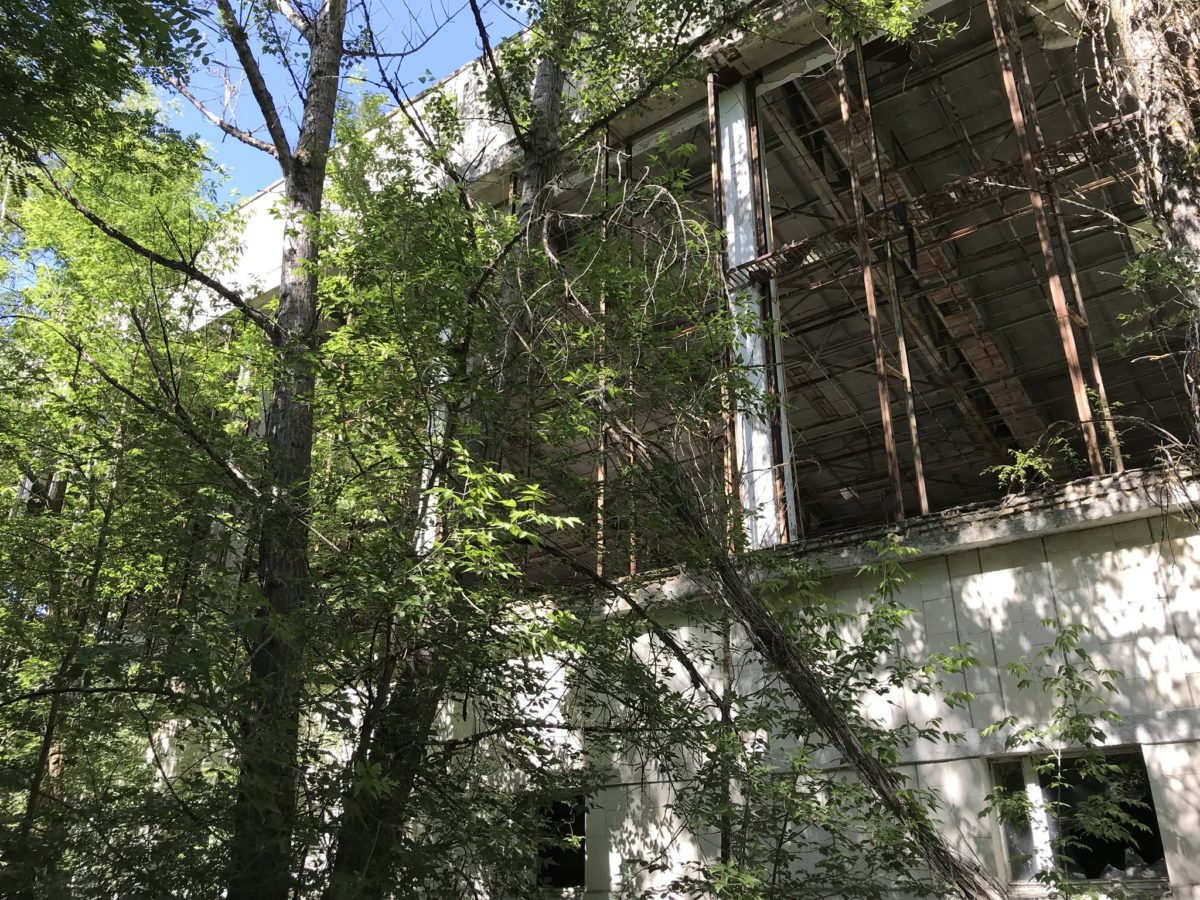
Abandoned amusement park in the city of Pripyat, Ukraine, evacuated in 1986 when the nearby Chernobyl nuclear power plant blew up.
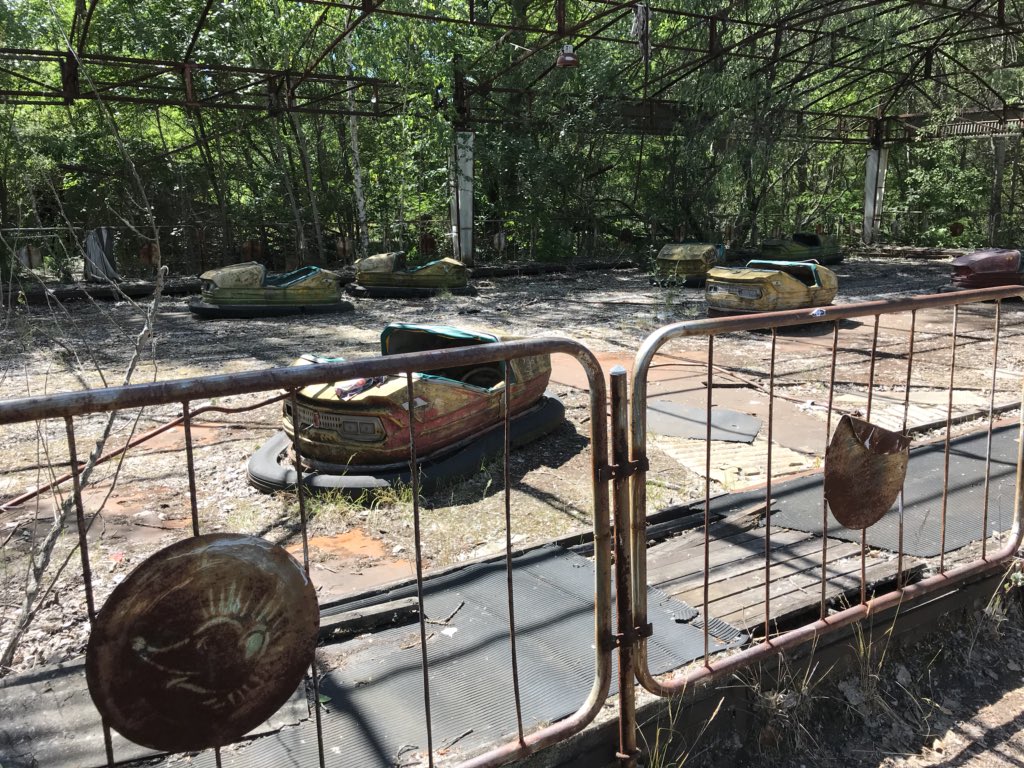
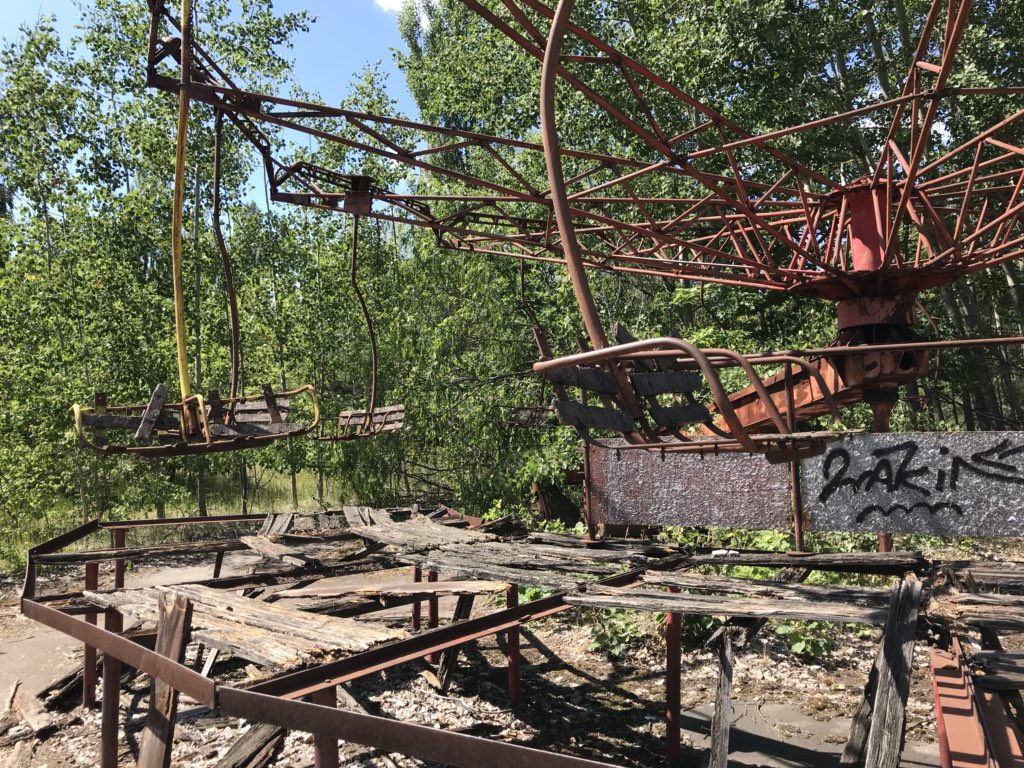
The abandoned Ferris wheel is one of the most famous landmarks of Pripyat, and appears in at least one post-apocalyptic video games.
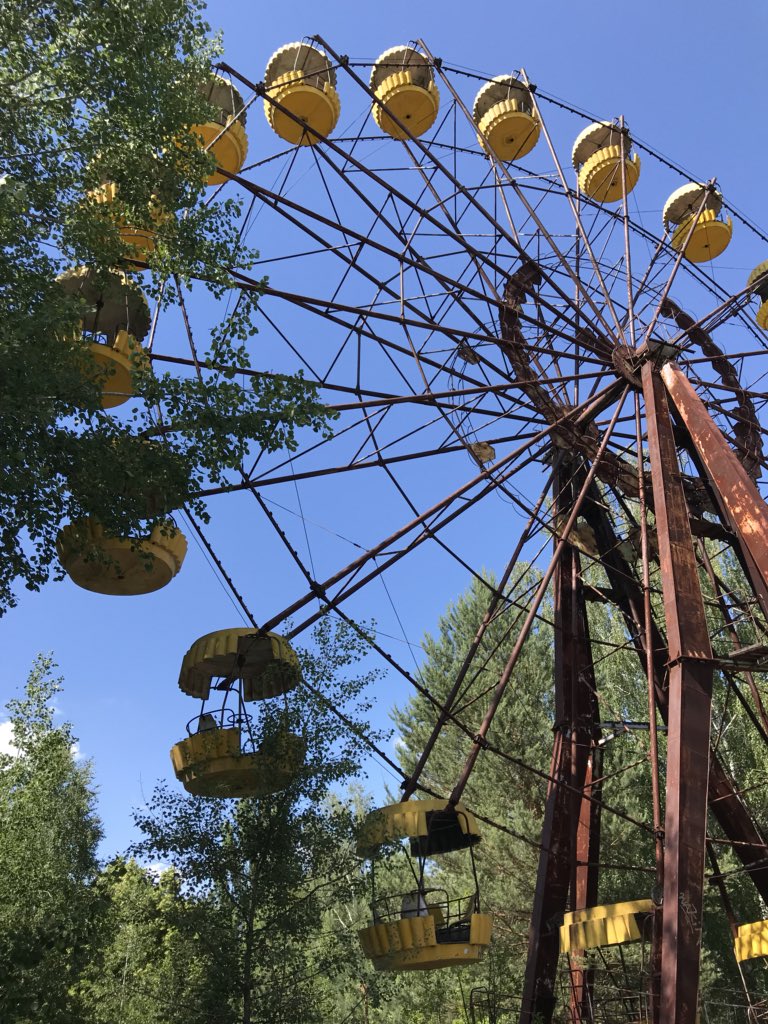
That’s because the far right Ferris wheel compartment is an infamous radiation hot spot.
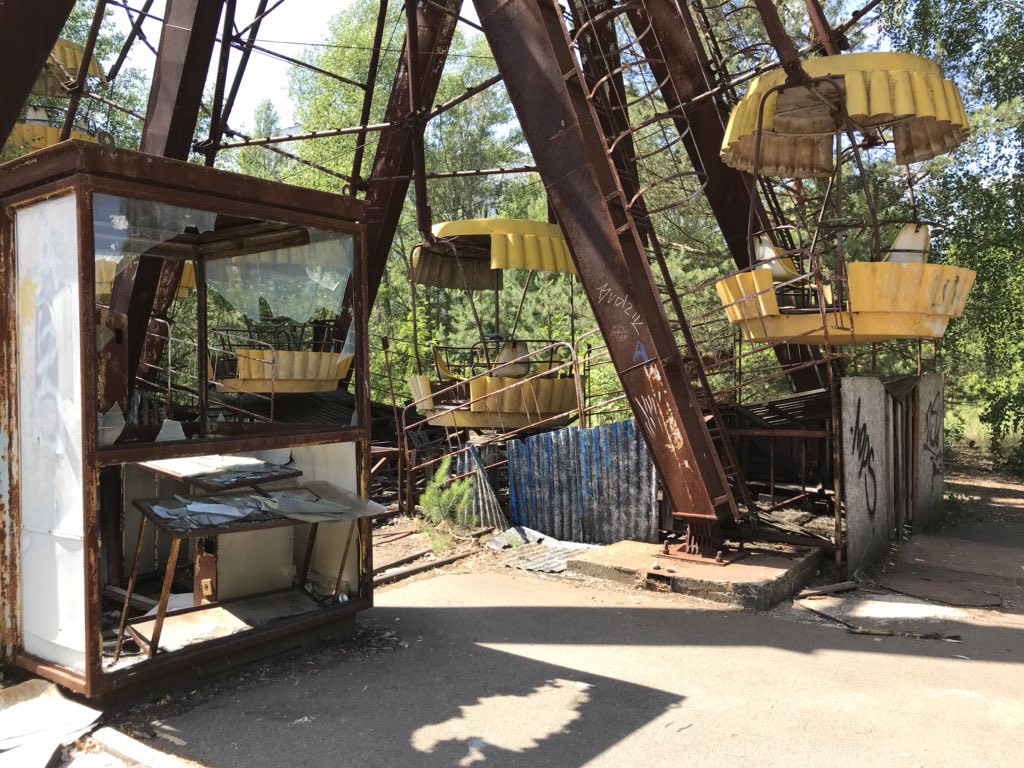
If you move your counter right up to a certain spot on this Ferris wheel compartment, it goes up to nearly 400 uSv/hr. That’s almost one dental X-ray every two minutes.
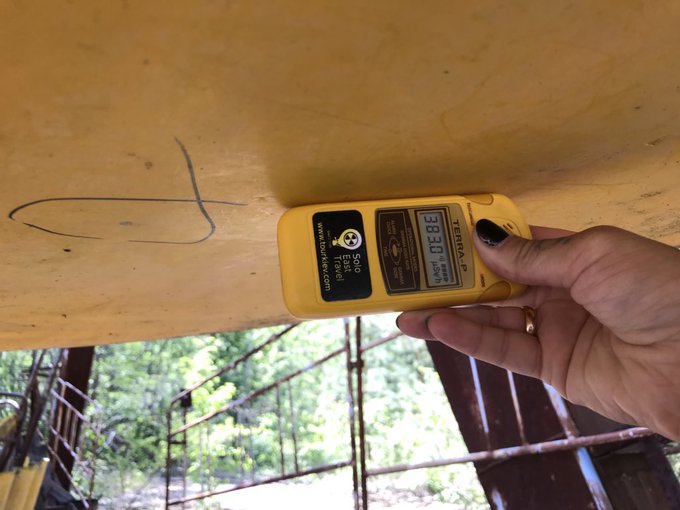
But taking that picture only took about 10 seconds, and even just a few feet away the radiation went down dramatically to 1 uSv/hr.
So (at least these days) it isn’t really a huge problem visiting Chernobyl and walking past “hot spots” of radiation for a few seconds. It would be living there and being exposed to such levels day in and day out. Or ingesting something or taking it home with you on your clothes.
Which is why you got through two radiation meters – kind of like fancy airport security gates – on your way out. And if you’ve got contamination on your clothes, they’ve got to either clean it or throw it out.
That rarely happens, if you’re careful and don’t roll around on the ground or anything stupid. But I wore old clothes that I had holes and such that I planned to throw out anyway, just in case.
Deserted Soviet army post that once guarded the top-secret Duga Radar installation in the Chernobyl exclusion zone, Ukraine.
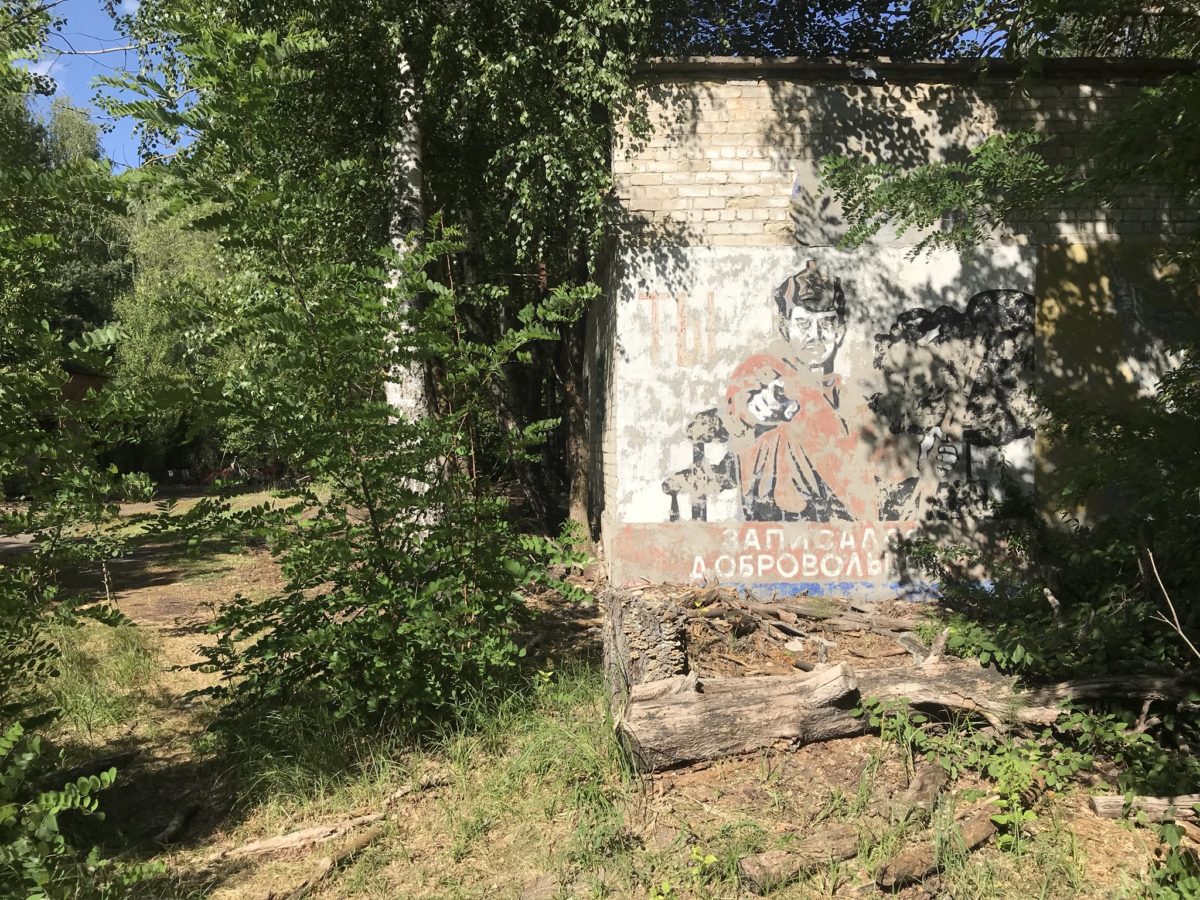
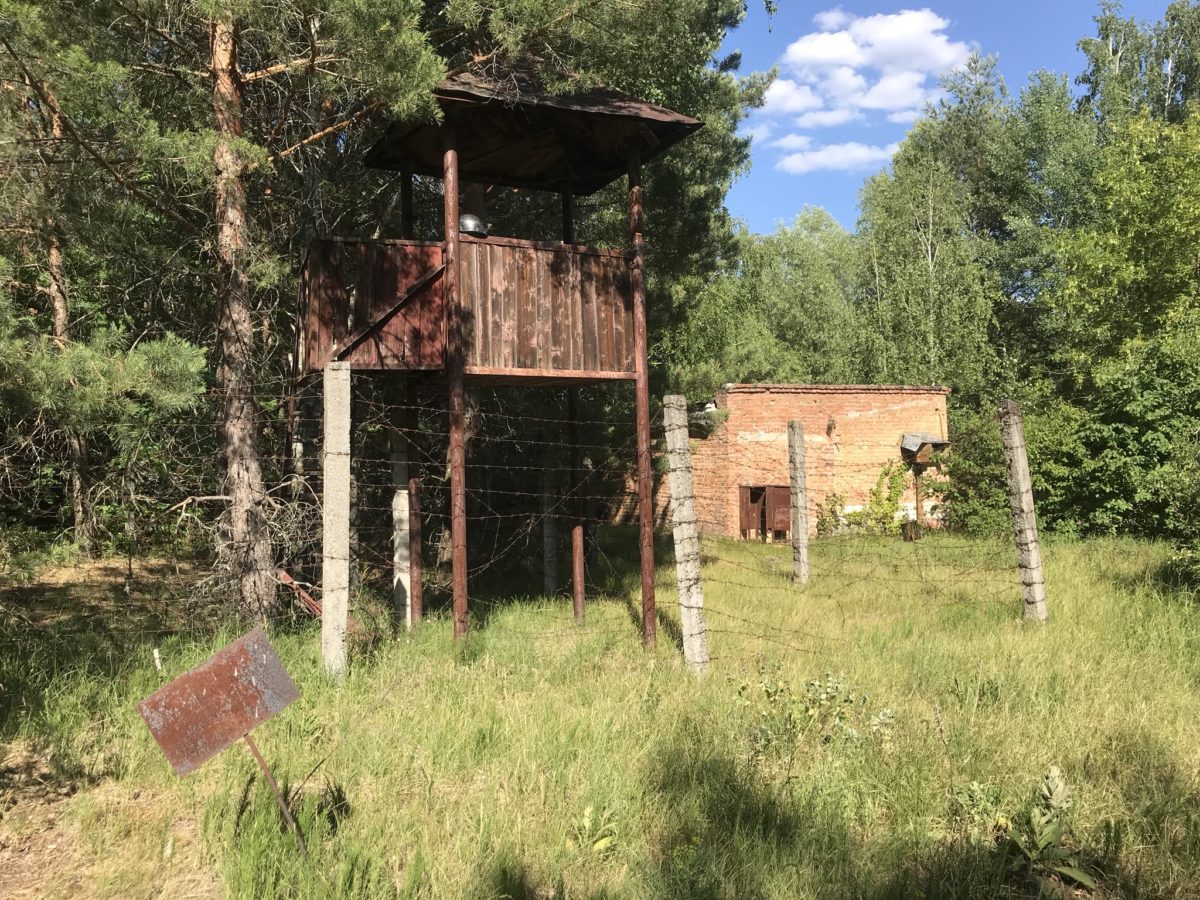
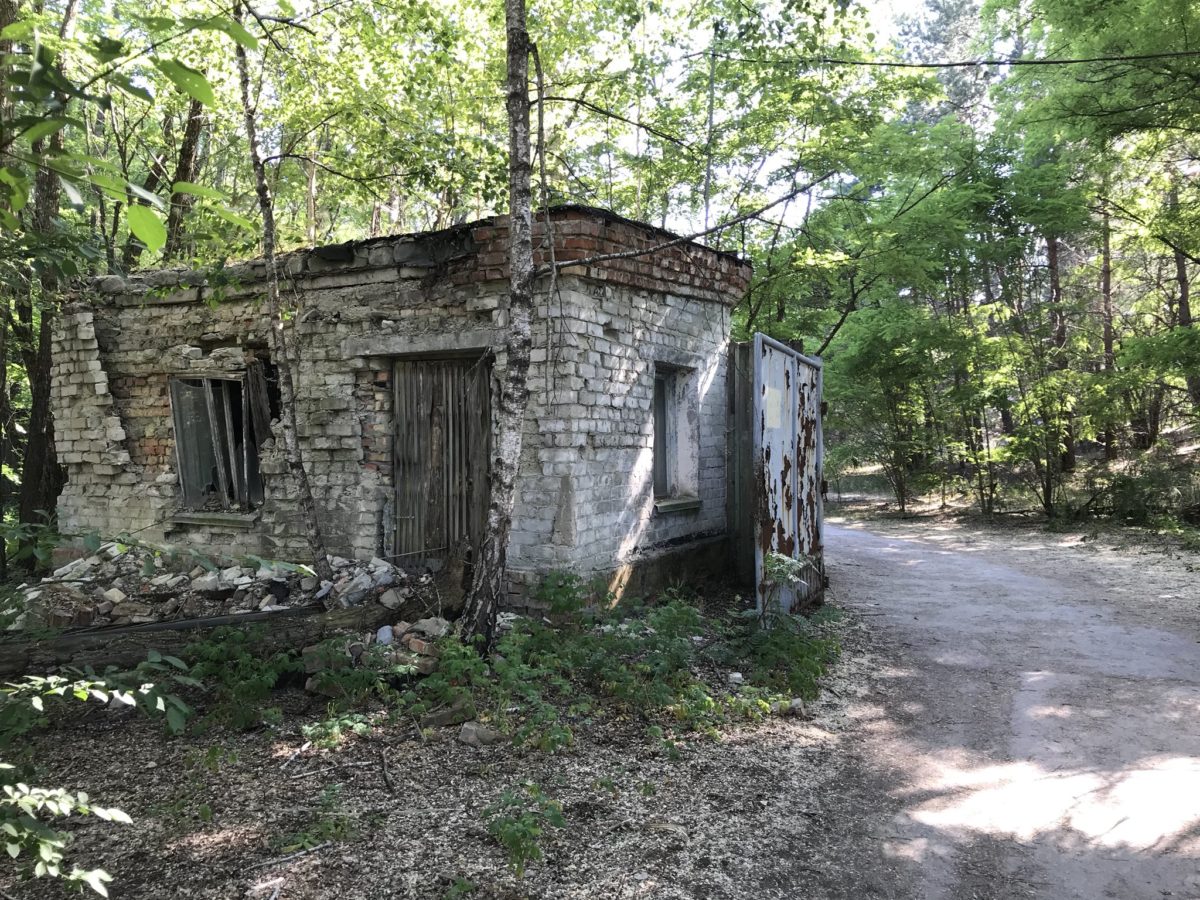
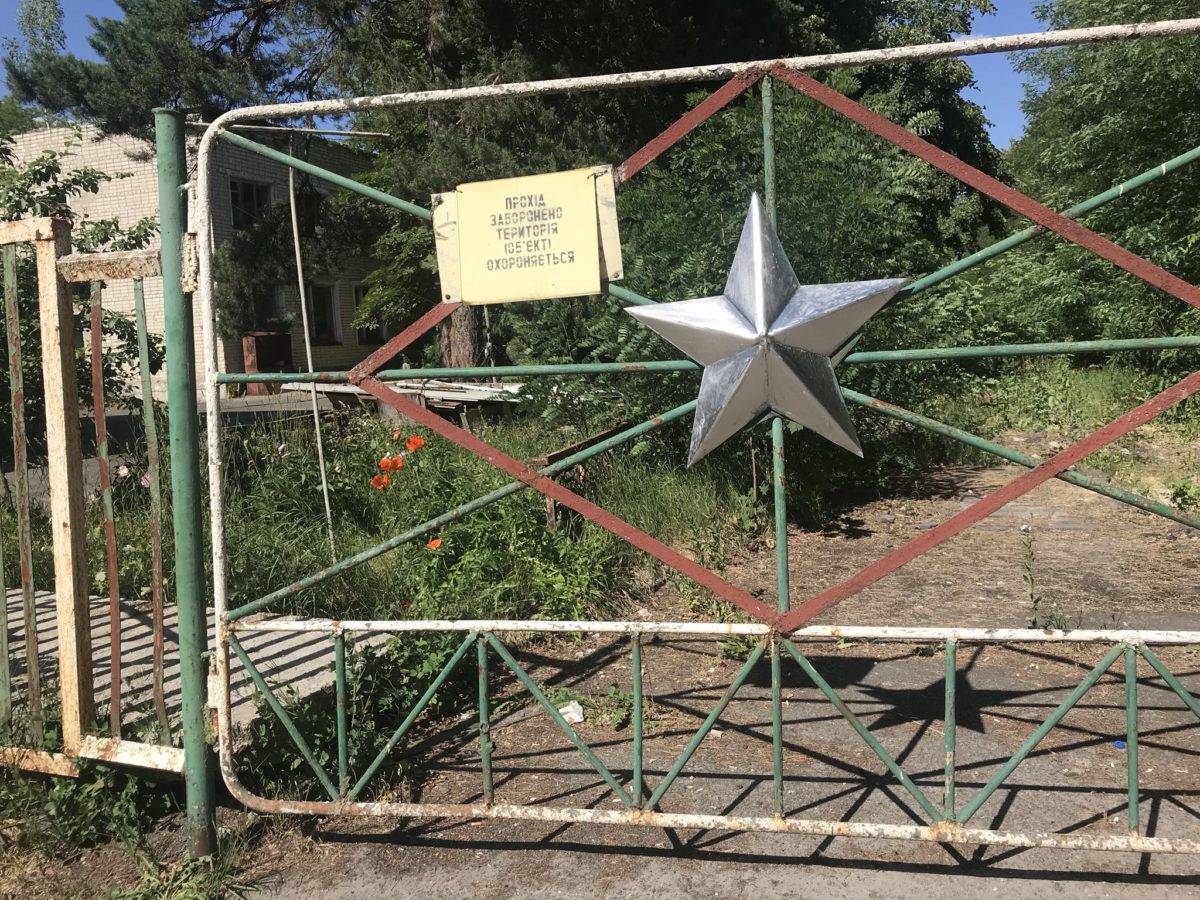
The Duga Radar, a top-secret over-the-horizon system that was supposed to detect US nuclear missile launches. There were two, one here at Chernobyl and the other in Siberia. This one had to be abandoned after the 1986 nuclear disaster
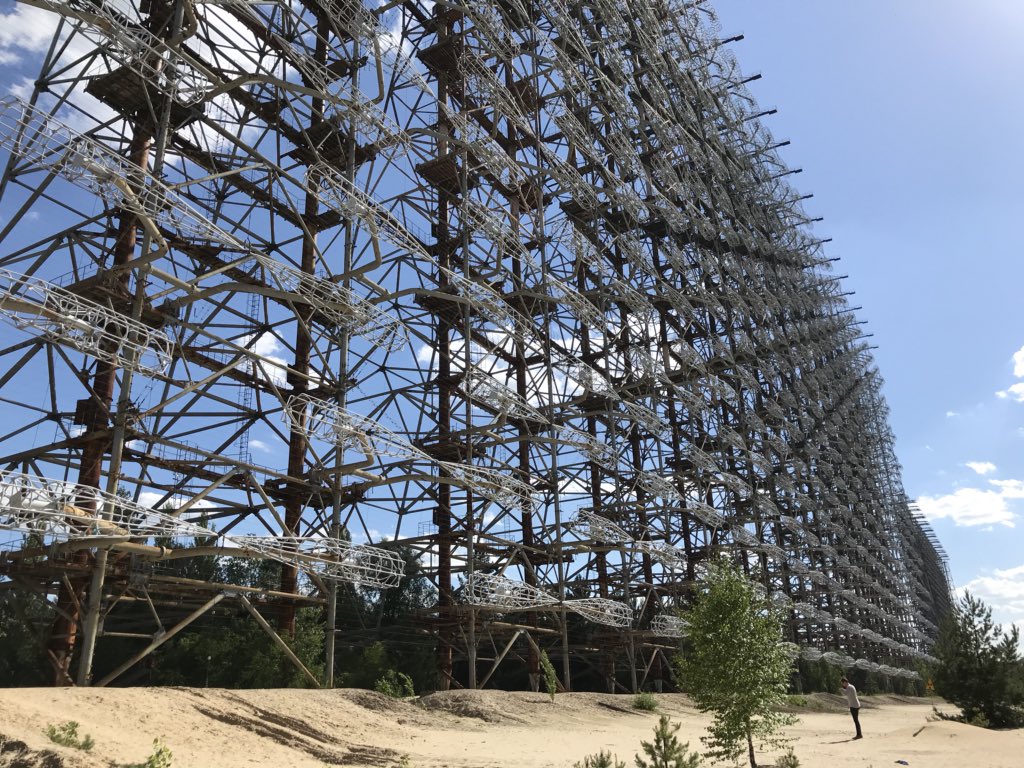
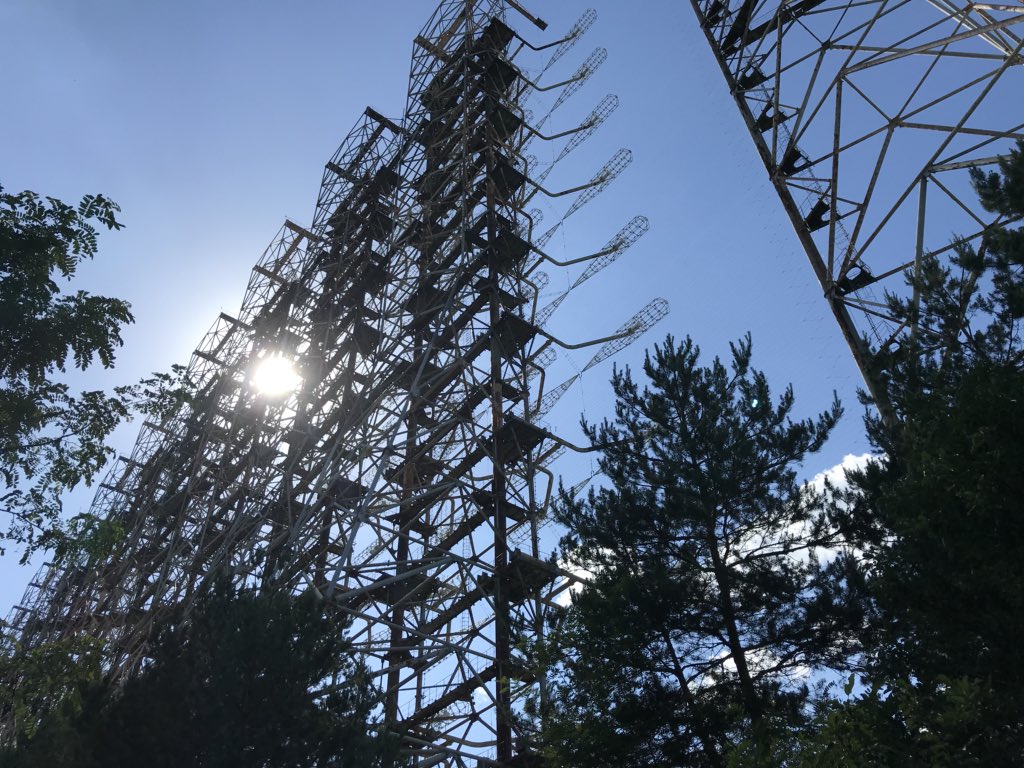
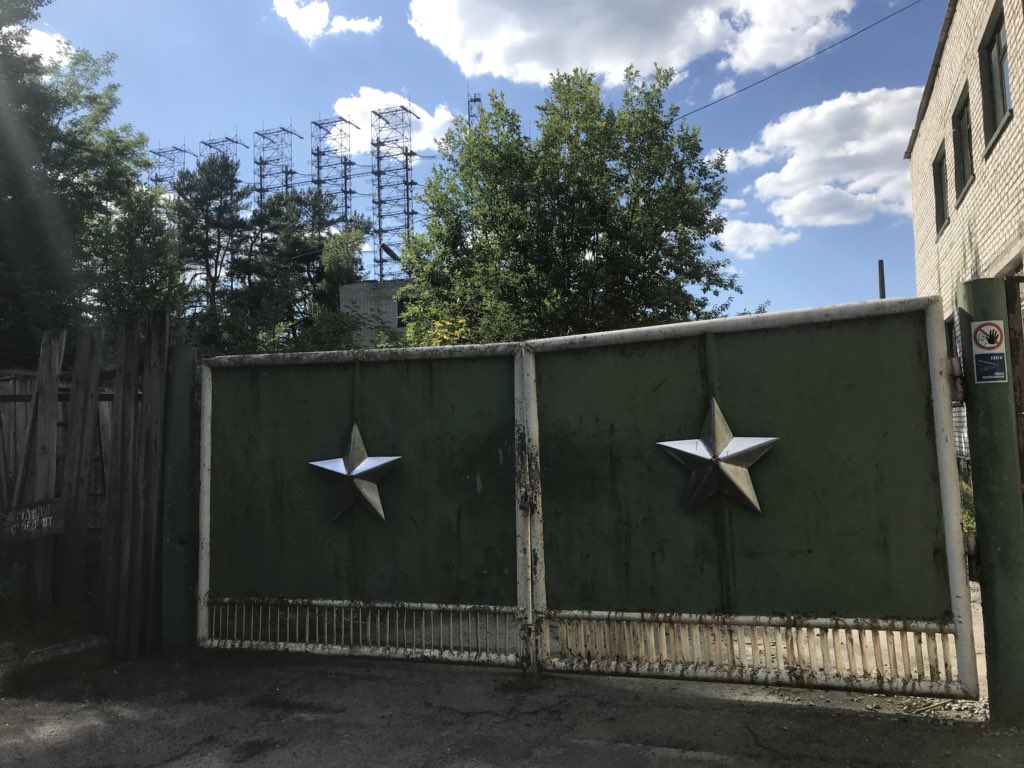
The radar signals emitted were given the nickname “Russian Woodpecker” by shortwave listeners, who often heard sharp, repetitive tapping noises, at a frequency of 10 Hz, that disrupted other broadcasts.
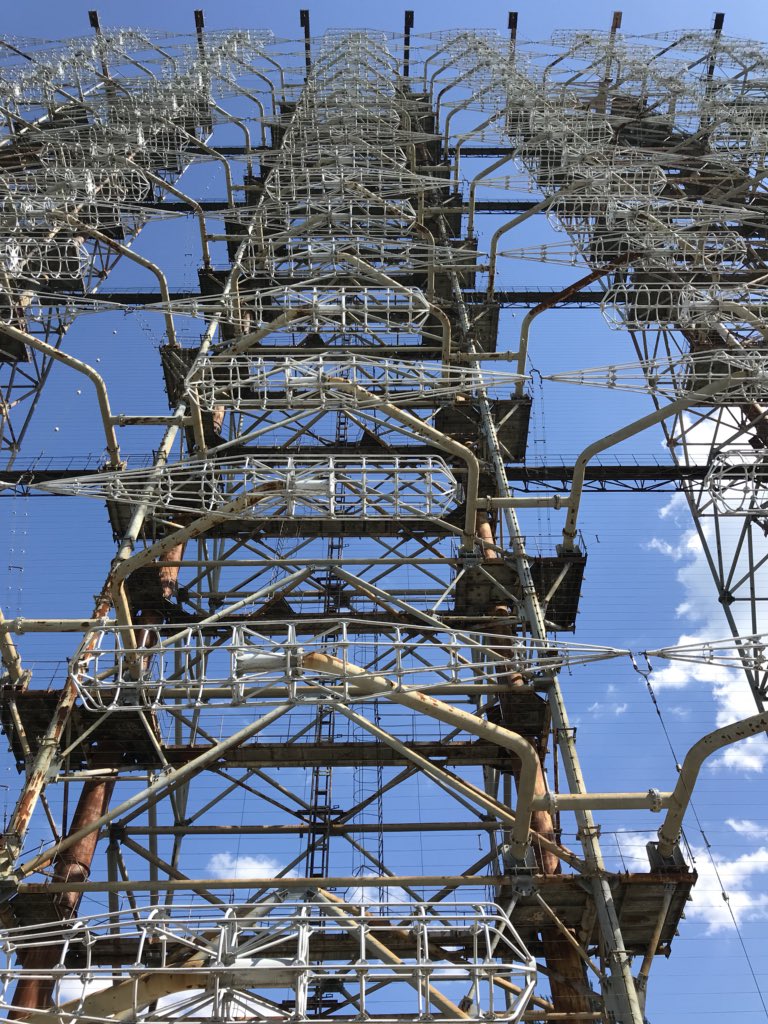
Based on my readings, I probably got the equivalent of one dental x-ray during my trip to Chernobyl today, which is probably a bit less than I got on my flights yesterday from New York to Kiev.
But if you lived there day in and day out, it’d be a problem. And if you drank some of the contaminated water in that well, you’d be toast.
Anyway, I learned a lot from just going there and holding a Geiger counter through the whole experience. And if I glow when I turn out the lights tonight, I’ll let you know.
Leave a Reply